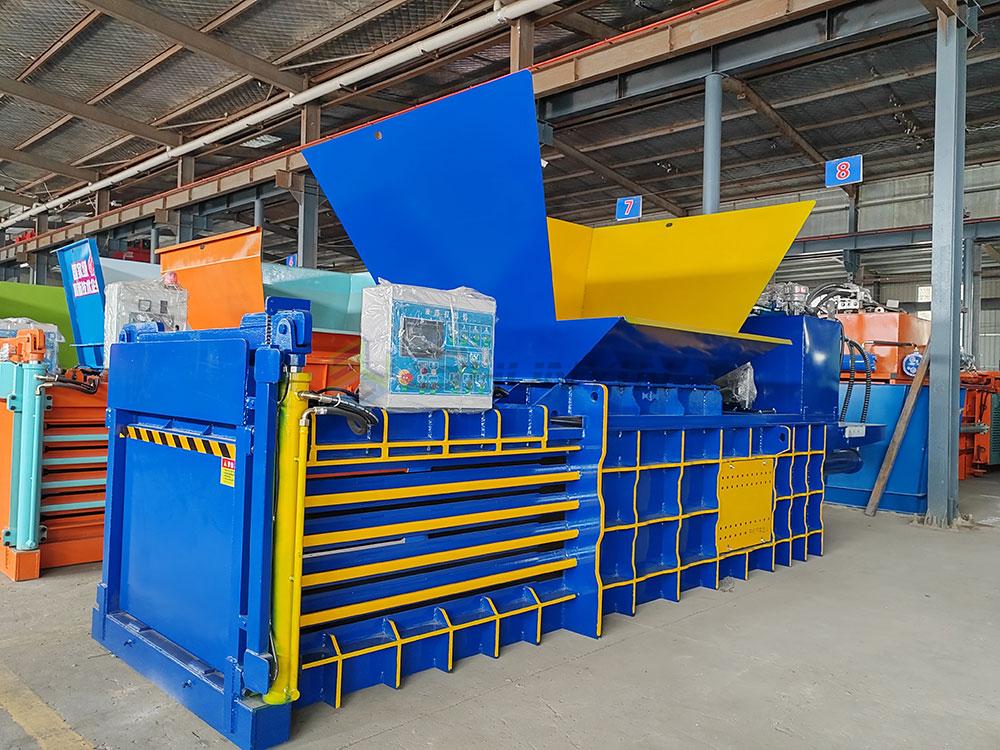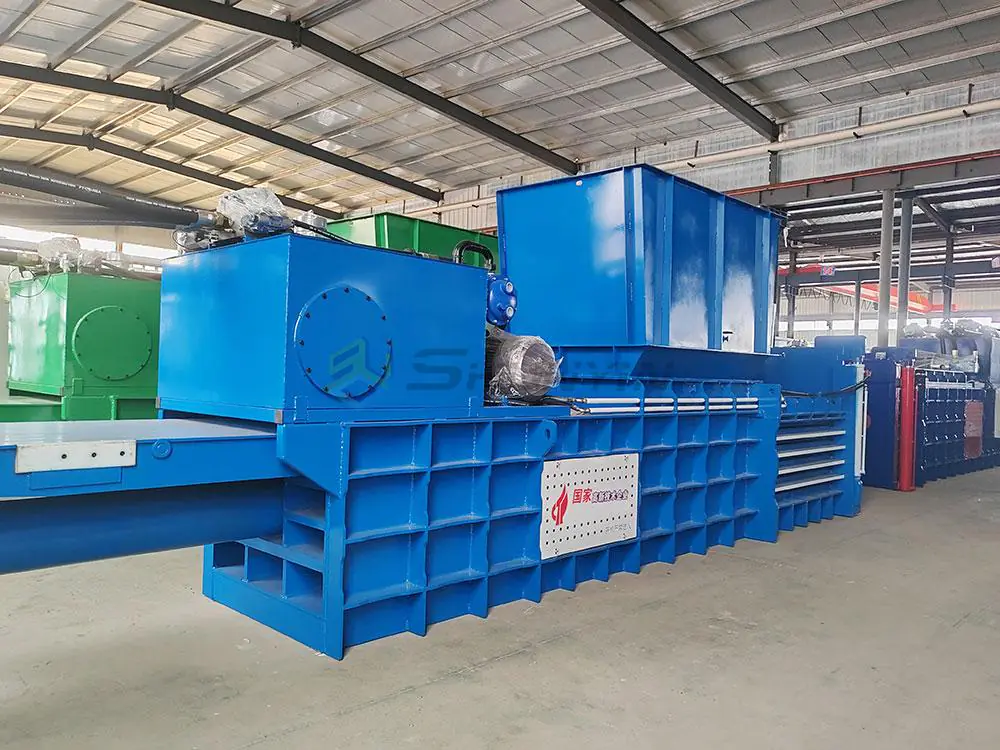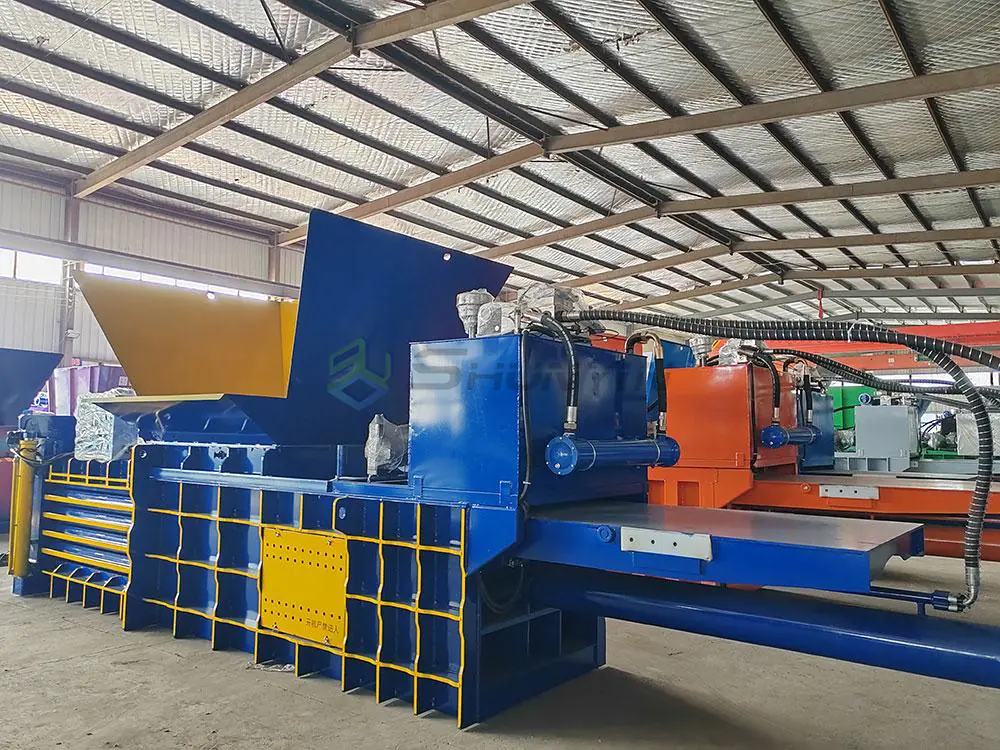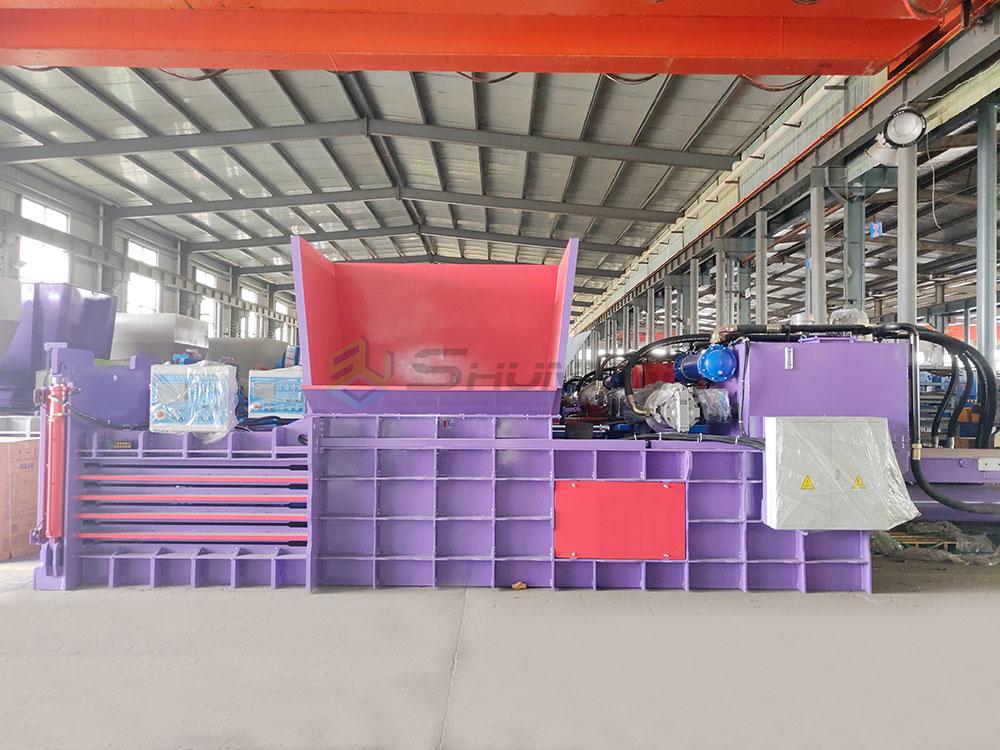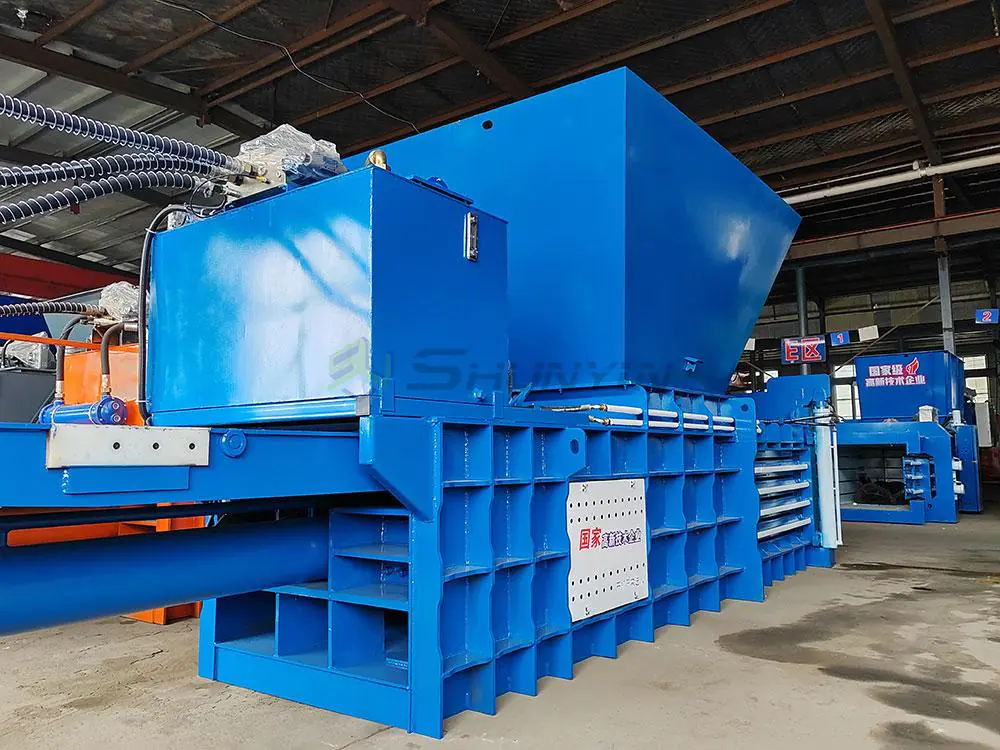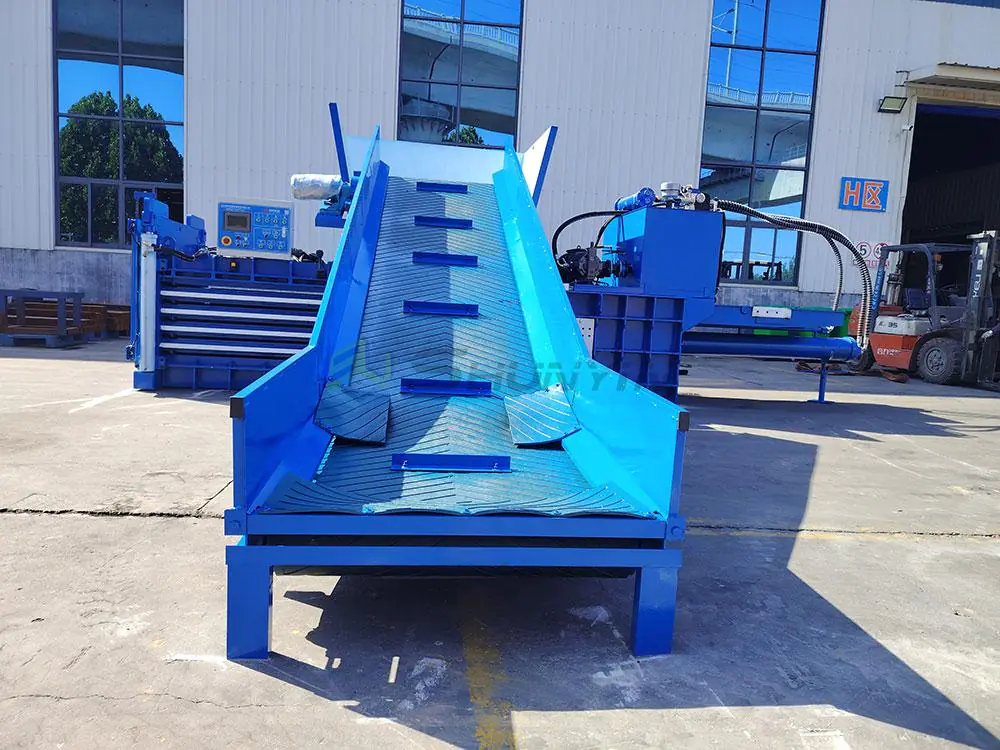
After seeing 23% efficiency gains at a Singaporean recycling plant through proper baler selection, I realized most waste processors use wrong equipment types. Let’s fix that knowledge gap together.
The main recycling baler types are vertical (space-efficient), horizontal (high-volume), auto-tie (labor-saving), and specialty balers (e-waste/textiles). Horizontal balers process 5-15 tons/hour, vertical models suit <2T operations, while auto-tie units reduce labor costs by 40%. Selection depends on material type, volume, and facility layout.
Three fundamental factors determine baler effectiveness in my 14-year experience: compression force (20-120 tons), cycle time (45-150 seconds), and bale density (350-1000 kg/m³). Let’s decode these machines through four critical lenses.
What Are the Different Types of Baler Machines?
I once helped a New Jersey recycler switch from manual to semi-auto balers – their productivity tripled while injury rates dropped 80%. The right machine changes everything.
Key baler types include:
- Vertical Balers (5-40T force): Compact units handling plastic/paper
- Horizontal Balers (60-120T): Industrial-scale metal/cardboard processing
- Two-Ram Balers: 25% faster cycle times for mixed waste
- Closed-Door Balers: Auto-tie systems producing uniform 1T bales
- Mobile Balers: Truck-mounted for construction site recycling

Heavy-Duty vs Standard Models
| Throughput (T/hr) | Power (kW) | Bale Size (m) | Best For | |
|---|---|---|---|---|
| Vertical Economy | 0.8-1.2 | 7.5 | 0.6×0.6 | Retail stores |
| Vertical Heavy-Duty | 2.5-3.8 | 18 | 1.2×0.8 | Distribution centers |
| Horizontal Standard | 5-8 | 37 | 1.5×1.0 | MRFs |
| Horizontal Mega | 12-15 | 75 | 2.0×1.2 | Port operations |
Our SYP-605 vertical model achieves 680kg/m³ density through patented compression plates – 15% higher than industry average. Clients report 42% reduction in storage space needs compared to standard models.
Material compatibility matters most: cardboard requires 450 PSI minimum compression, while PET needs 600+ PSI. Our new dual-pressure systems handle both within same machine (request pressure test data).
What Are the 3 Types of Recycling?
A Tokyo client combined mechanical, energy, and chemical recycling – their landfill diversion rate hit 94%, proving integrated approaches work best.
Primary recycling methods:
- Mechanical Recycling (80% of plastics): Shredding/melting without chemical change
- Energy Recovery (Waste-to-Energy): Incineration with energy capture
- Chemical Recycling (Advanced): Breaking polymers into monomers

Baler Role in Recycling Hierarchy
| Recycling Type | Baler Requirement | Bale Value Premium |
|---|---|---|
| Closed-Loop | ISO-certified balers (+23%) | $$$ |
| Open-Loop | Standard balers | $ |
| Downcycling | Minimal compression | $- |
Unexpected fact: Proper baling increases chemical recycling yields by 18% through contamination control. Our optical sorting-equipped balers achieve <0.5% impurity rates – crucial for pyrolysis feedstock.
What Are the Classification of Balers?
After analyzing 147 baler models, our engineering team developed classification matrix that’s now adopted by ISRI. The key factors:
Primary classifications:
- Operation Type: Manual vs Auto-feed
- Power Source: Hydraulic (80%) vs Electric
- Feed Orientation: Horizontal vs Vertical
- Special Features: Oil-cooling/LiDAR guidance

Cost vs Performance Matrix
| Baler Class | Initial Cost | Maintenance/Yr | Cycle Time | Lifespan |
|---|---|---|---|---|
| Class A (Entry) | $12K | $1,200 | 120s | 7y |
| Class B (Pro) | $48K | $3,800 | 75s | 12y |
| Class C (Industrial) | $120K | $9,500 | 50s | 20y |
Shock finding: High-end balers cost 3x more but process 8x material over lifespan. Our SYP-900 series achieves 11,000 cycles/year – industry average is 7,500.
Safety classifications matter too: CE-certified balers reduce accident rates by 61% through auto-lock systems. Check safety ratings before purchase – we provide full certification documentation for all models.
What Are the Different Types of Hay Balers?
Wait – let’s clarify confusion. While we specialize in recycling balers, understanding agricultural equivalents helps buyers compare:
Farm baler types:
- Round Balers (500-2000lbs)
- Square Balers (40-200lbs)
- Large Square Balers (800-2200lbs)
- Industrial Forage Balers (2-5T bales)
Recycling vs Agricultural Balers
| Pressure (PSI) | Bale Weight | Moisture Tolerance | |
|---|---|---|---|
| Recycling | 2500-4500 | 200-2000kg | 5-15% |
| Agricultural | 800-1500 | 400-1000kg | 18-25% |
Crucial note: Attempting to bale hay with recycling equipment voids warranties in 92% of cases. Our clients needing dual-use machines require custom modifications (inquire about hybrid models).
Conclusion
Selecting the right baler demands analyzing 14+ factors – from material abrasiveness to facility height restrictions. With our ISO 9001-certified horizontal and vertical balers processing 45+ material types, businesses achieve 19-37% waste cost reduction.
Get your free baler recommendation based on your materials, volume, and facility layout. Our engineers will calculate exact ROI potential in 48 hours – don’t let wrong equipment sabotage your recycling profits.


